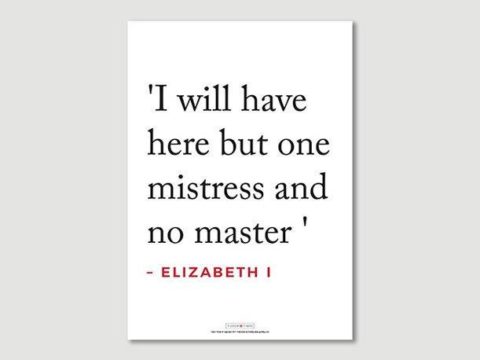James VI & I: Life Story
Chapter 5 : James & the Kirk
Although Lennox’ conversion to Calvinism appears to have been genuine, he was no friend to the notion that the Kirk should have equal, or even more authority, than the King. If James had had any doubts as to what the Kirk expected of him, he could consult the book by his old tutor George Buchanan, De Jure Regni Apud Scotos which very clearly declared that King ought to be the servant of his people.
It is paradoxical to note that the Protestant Reformation which had so vehemently argued against Papal and Ecclesiastical power should emphasise the authority of the Kirk – although it was democratic in that the members appointed the leaders. This idea of the Kirk’s authority was outlined in the Second Book of Discipline, first published in 1578, which claimed that although the King was supreme in civil matters, ‘all godly princes and magistrates’ ought to be guided by the Kirk.
This was certainly not the sort of idea that Kings, even so young as James, liked to entertain and he rapidly became a supporter of the traditional Church hierarchy which included bishops. At first glance it may be difficult for those of us not involved in the arcane complexities of Church government in the 16th century to understand the difference between the superintendents of the Kirk and the bishops of the traditional Church. The distinction lies in the belief that the superintendents ought to be selected by, and ultimately answerable to, the godly Church members of the congregations, rather than being part of a separate priesthood. For James it was important that bishops be seen as representing authority that derived from the King’s appointment rather than from the people.
Doctrinally, James never wavered from his Calvinist upbringing. In 1581, to clarify his religious position, a document called the King’s Confession, or sometimes the Negative Confession, was drawn up for signature by both King and people. In it the signatories confirmed their allegiance to ‘the true religion’, their opposition to the Roman Catholic Church and their willingness to defend the King, the gospel and the country. The document was drawn up by John Craig, the Moderator of the General Assembly (the governing body of the Kirk) who had once been a Dominican friar, until converted by the doctrines of Calvin.
Despite his genuine support for the Protestant Kirk, James was very ready to accept the principles of regal and ecclesiastical hierarchy that Lennox espoused, whose experience of life in France gave him a more exalted view of the powers of kingship. The advent of Lennox also introduced James to a wider cultural media, particularly the pleasures of poetry, promoting a circle at court which became known as the Castalians, who wrote in Scots. James himself frequently wrote poetry, but it was never more than competent.
Lennox’ arrival also led to a rapprochement with the deposed Mary. During his childhood James had heard nothing but ill of Mary. Buchanan, having once been full of praise for his Queen, had denounced her in the worst terms as an adulteress, murderess and idolater. James now began to reassess these ideas and to equate criticism of Mary with the undermining of royal authority. In 1584 the Estates formally condemned Buchanan’s writings.
Such a rehabilitation of Mary’s reputation, did not of course, mean that James was prepared to give up his throne in favour of his mother. Lennox had come to Scotland to achieve the Guise mission of restoring Mary either completely, or in joint authority with James, with James ruling in fact. Whilst many of the old Queen’s Party, such as Maitland of Lethington and Lords Seton and Maxwell, favoured the scheme, for many it was seen as the slippery slope towards a return to Rome and was vehemently opposed.
James was, to begin with, keen – it would legitimise his sovereignty in the eyes of Catholic Europe and give their joint weight to their claim to the English throne. Soon however, it dawned on James, perhaps with the help of another of his new favourites, Sir Patrick Gray, that such a scheme would actually place obstacles in his way to power at home and in England. He corresponded with his mother, whilst at the same time advocating that the Association should only take effect on the basis that she would remain confined in England.
James VI & I
Family Tree



